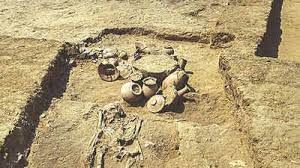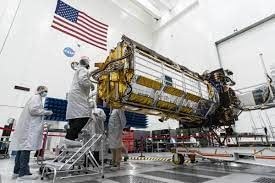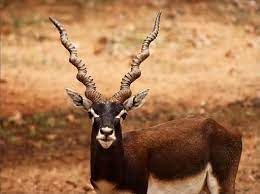UPSC Daily Current Affairs- 15th February 2023 | Current Affairs & Hindu Analysis: Daily, Weekly & Monthly PDF Download
GS-I
Eastern Rajasthan Canal Project (ERCP)

Context
The Union government has proposed a mega project to merge two projects – Eastern Rajasthan Canal Project (ERCP) and the Parbati-Kalisindh-Chambal River Link.
About Eastern Rajasthan Canal Project (ERCP):
- It is a project aimed at harvesting surplus water available during the rainy season in southern Rajasthan and using it in the water-scarce south-eastern districts of the state.
- Districts covered: Jhalawar, Baran, Kota, Bundi, Sawai Madhopur, Ajmer, Tonk, Jaipur, Karauli, Alwar, Bharatpur, Dausa, and Dholpur.
- Rajasthan’s geographical area of 342.52 lakh hectares equals 10.4 per cent of the entire country but holds only 1.16 per cent of India’s surface water and 1.72 per cent of groundwater.
- Among the state’s water bodies, only the Chambal River basin has surplus water, but this water cannot be tapped directly because the area around the Kota barrage is designated as a crocodile sanctuary.
- The project will have components including diversion structures, intra-basin water transfers, linking channels, and building pumping main feeder channels to create a network of water channels.
- Although the project was approved by the Central Water Commission in 2017 it had been put in limbo by the Jal Shakti Ministry of the central government till the “inter-state issues” are resolved between Rajasthan and Madhya Pradesh.
Source: Indian Express
Rakhigarhi

Context
About Rakhigarhi:Rakhigarhi is an endangered Harappan site in Haryana.
- Rakhigarhi is an archaeological site located in Hisar district (Haryana), in the Ghaggar-Hakra river plain.
- Rakhigarhi is the largest Harappan site in the Indian subcontinent
- Dating back to 2600-1900 BCE.
- The site is in danger of being destroyed by rampant soil mining, encroachment, and theft of excavated artefacts for sale.
Settlements:
- It is a mature Harappan phase and is represented by a planned township having mud-brick as well as burnt-brick houses with a proper drainage system.
- A cylindrical seal with five Harappan characters on one side and a symbol of an alligator on the other is an important find from this site.
- The ceramic industry was represented by red ware, which included dish-on-stand, vase, perforated jar among others.
- Animal sacrificial pits lined with mud-brick and triangular and circular fire altars on the mud floor
- Two female skeletons, who were buried with a plethora of pottery and adorned jewellery like jasper, agate beads and shell bangles, have been excavated.
- Blades; terracotta and shell bangles, beads of semi-precious stones, and copper objects; animal figurines, toy cart frame and wheel of terracotta; bone points; inscribed steatite seals and sealings.
Source –Times of India
GS-II
Apatani Tribe
Context
The Apatanis, one of the major ethnic groups of the eastern Himalayas, practise a distinctive form of agriculture where rice and fish are grown together and need encouragement.
About Apatani Tribe:
- The Apatani are a tribal group of people living in the Ziro valley in Arunachal Pradesh.
- They speak a local language called Tani and worship the sun and the moon.
- They have major festivals like Dree, Myoko, Yapung and Murung.
- Dree is celebrated with prayers for a bumper harvest and prosperity of all humankind and Myoka celebrates friendship similar to modern friendship day.
- They have been practising integrated rice-fish farming in their mountain terraces of Arunachal Pradesh.
- Apatanis principally use three rice varieties: Emeo, Pyape and Mypia.
Source: The Hindu
GS-III
India - USA space cooperation

Context
India and the United States agreeing to advance space collaboration in several areas, under the ‘initiative on critical and emerging technology’ (ICET) umbrella, including human space exploration and commercial space partnership, comes at a crucial time for both countries.
- This follows from the eighth meeting of the U.S.-India Civil Space Joint Working Group (CSJWG), that was held on January 30-31, 2023.
Space research cooperation:
- In November 2022, the U.S. kicked off its Artemis programme by launching the Orion spacecraft towards the moon and bringing it safely back to earth.
- India itself is set to embark on its first human spaceflight mission (Gaganyaan) in 2024.
- The two countries have also taken significant strides in advancing the private space sector.
- Together, these endeavours will shape and impact S. and Indian space policies and programmes over the next decade.
- In this context, a S.-India collaboration seems straightforward.
- India could secure technologies and expertise by collaborating with an advanced spacefaring nation; the U.S. could strengthen its relationship with India on a matter that seems less controversial than others.
- But it is not straightforward: certain structural factors limit the extent to which the U.S. and India can collaborate in the short term.
- This is why India-U.S. cooperation can advance at a measured pace, to enable sustainable long-term civilian and military space partnerships.
Structural factors which hinders sustained long term cooperation:
The mismatch in the two nations’ interests in outer space:
- India’s scientific community is, at present, focused on building the nation’s capability in and under earth orbits (such as low earth orbit).
- But The US has committed to returning to the moon — and this time to stay there for the long term.
- Thus they are not focused on, as India is, maintaining capabilities in low-Earth orbit.
The asymmetry in capabilities:
- The U.S. has the highest number of registered satellites in space.
- It also has a range of launch vehicles serving both commercial and national-security needs.
- The American private sector has also assumed the challenge of replacing the International Space Station by 2030 with many smaller stations.
- The greatest challenge for India here is lack of capacity.
- The country has just over 60 satellites in orbit and cannot undertake double-digit launches annually.
- The Indian government also opened the space industry to the private sector only in 2020.
NASA’s Artemis Programme:
- NASA’s Artemis mission is touted as the next generation of lunar exploration, and is named after the twin sister of Apollo from Greek mythology.
- With the Artemis programme, NASA aims to land humans on the moon by 2024, and it also plans to land the first woman and first person of colour on the moon.
- NASA will establish an Artemis Base Camp on the surface and a gateway (the lunar outpost around the Moon) in lunar orbit to aid exploration by robots and astronauts.
- Canadian Space Agency, the European Space Agency and the Japan Aerospace Exploration Agency are also involved in this mission.
ISRO’s Gaganyaan Mission:
- Gaganyaan is an Indian crewed orbital spacecraft that is intended to send 3 astronauts to space for a minimum of seven days by 2023, as part of the Indian Human Spaceflight Programme.
- It will be for the first time that India will launch its manned mission to space, making the country fourth in line to have sent a human to space.
Solutions lies ahead:
- Sustain the engagement between academics, the private sector and state-led entities in the two countries.
- For example, collaborating on highly specialised projects such as the NASA-ISRO Synthetic Aperture Radar (NISAR) mission.
- But these solutions are slow and not entirely suited for the new space age, where diplomacy struggles to keep up with the rate of technological innovation.
- Promoting partnership between state and private entities.
- For example, recently signed a convention of American and Indian aerospace companies to advance collaboration under the National Aeronautics and Space Administration’s (NASA) Commercial Lunar Payload Services (CLPS) programme.
- India could send its astronauts to train at American private companies.
- This could help India reduce its dependence on Russia while ISRO builds its own astronaut training centre.
- Promoting a consortium led by the government-owned NewSpace India Limited which involves private companies in the U.S.
- This setup could accelerate India’s human spaceflight programme and give the U.S. an opportunity to accommodate Indian interests in earth orbits.
Way Forward:
India and USA can break new frontiers in space research and strategic cooperation as ‘natural allies’. But for that, Indian space agency and private sector must build their capacity and bridge the existing gap with USA.
Space industry observers believe that the space sector is poised for a three-fold expansion in the next two decades, propelled by the miniaturisation of satellites and the growing presence of a range of private players. As a result, India must rapidly develop its space capabilities, and cooperation with the world’s largest and most advanced space nation is the need of the hour.
Source : The Hindu
Monkeypox
Context
According to a recent statement by the World Health Organization (WHO), as many as 85,765 confirmed and 1,382 probable cases of monkeypox were reported from 110 countries since January 1, 2022.
About Monkeypox:
- Monkeypox is caused by the monkeypox virus which belongs to the orthopoxvirus genus.
- The virus is normally seen in African countries.
- Sub-genus:There are two clades of monkeypox virus, the West African clade and the Congo Basin (Central African) clade.
- Transmission:Monkeypox is a viral zoonosis (a virus transmitted to humans from animals), for example, bites of infected rodents and squirrels and is also transmitted from one person to another by close contact with lesions, body fluids, respiratory droplets and contaminated materials such as bedding.
- Incubation period:The incubation period (the period between exposure to an infection and the appearance of the first symptoms) of monkeypox is usually from 6 to 13 days but can range from 5 to 21 days.
- Symptoms:Fever, rash and swollen lymph nodes and may lead to a range of medical complications.
- There is no effective vaccine available for Monkeypox infection.
Source: Indian Express
Market Access Initiative (MAI)

Context
Apparel Export Promotion Council (AEPC) inaugurated the first edition of up next India 2023 in presence of international buyers and exhibitors.
- This initiative is in the form of a series of Reverse Buyer Seller meet under the name of “UPNEXT INDIA”.
- Reverse Buyer Seller Meet is to provide an opportunity for prospective importers (Buyers) to interact with their Indian counterparts (sellers) about the requirements, instead of sellers going to buyers to sell their products.
- Up next India is organised by AEPC and supported by the Ministry of Commerce and Industry under the Market Access Initiative (MAI) Scheme.
Market Access Initiative (MAI):
- It is an Export Promotion Scheme. The scheme aims to act as a catalyst to promote India’s exports on a sustained basis.
- The scheme is formulated on the basis of the product and country focus approach. It will evolve specific markets and specific products through market studies/surveys.
Apparel Export Promotion Council (AEPC):
- Incorporated in 1978, AEPC is the official body of apparel exporters in India
- It provides invaluable assistance to Indian exporters as well as importers/international buyers who choose India as their preferred sourcing destination for garments.
Source – PIB
Blackbuck

About Blackbuck:The blackbuck population has increased threefold in Odisha’s Ganjam district.
- The Blackbuck (Antilope cervicapra), or the Indian Antelope, is a species of antelope native to India and Nepal.
- The blackbuck is a diurnal antelope (active mainly during the day).
- Wildlife Protection Act 1972: Schedule I
- IUCN Status: Least Concern
- CITES: Appendix III
- It has been declared as the State Animal of Punjab, Haryana, and Andhra Pradesh.
- They inhabit grassy plains and thin forest areas with easily available water resources.
- It inhabits several protected areas of India, including:
- Gir National Park, Gujarat
- Kaimur Wildlife Sanctuary, Bihar
- Kanha National Park, Madhya Pradesh
- Ranthambore National Park, Rajasthan
- Ranebennur Blackbuck Sanctuary, Karnataka
- Vallanadu Wildlife Sanctuary, Tamil Nadu
- Habitat Fragmentation, Deforestation, Natural Calamities, Illegal Hunting.
- Blackbucks were sighted in the Balukhand-Konark wildlife sanctuary in the Puri district through 2012-13
- The Balukhand-Konark Wildlife Sanctuary is located in Odisha, along the Bay of Bengal coast, between the towns of Puri and Konark.
- Important Species found: Blackbuck and Spotted Deer.
Source: Down to earth
|
38 videos|5258 docs|1111 tests
|
FAQs on UPSC Daily Current Affairs- 15th February 2023 - Current Affairs & Hindu Analysis: Daily, Weekly & Monthly
| 1. What is the GS-I exam? |  |
| 2. What are the subjects covered in GS-II? |  |
| 3. How can I prepare for the UPSC civil services examination? |  |
| 4. Is it necessary to join coaching institutes for UPSC preparation? |  |
| 5. What is the importance of current affairs in the UPSC civil services examination? |  |


















